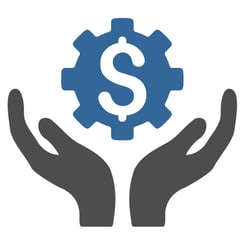 A wise business associate of mine once observed, "If you're losing money on every hour you bill, then you can't make it up in volume." The “it” he was referring to is, of course, profit. Not knowing your cost of doing business and pulling your pricing out of a hat can often lead to bad decisions.
A wise business associate of mine once observed, "If you're losing money on every hour you bill, then you can't make it up in volume." The “it” he was referring to is, of course, profit. Not knowing your cost of doing business and pulling your pricing out of a hat can often lead to bad decisions.
When it comes to government contracting, much of the terminology bandied about to the uninitiated sounds like a language all of its own. You'll hear about IRAD, B&P, cost pools and an abundance of other acronyms and buzzwords. One phrase you may hear that doesn't cause too much bewilderment for newcomers to the industry is "cost buildup". As it implies, this translates to a layered cost approach to pricing your services - in other words - your total direct costs plus total indirect costs become your basis for price negotiations to derive your all-important target fee.
While doing business with another commercial entity, your pricing is typically set by a myriad of market driven factors that include - but are not limited to - your competitors' price, brand awareness, gross margin, skill level and experience. For instance, if you are an accountant or an attorney, you may factor in your particular subject matter expertise within your area of specialty and combine that with the "x" number years of experience you have and charge a higher hourly billing rate than someone who has recently graduated from college or has recently passed the professional examinations. Chances are you are not overthinking your base rate of pay, fringe benefits, overhead, etc. when determining your billing rate, but rather are using a subjective billing rate strategy that is not based upon empirical cost data.
In providing services to the federal government, while attributes such as subject matter expertise remain important, you will experience downward pressure on your billing rates since more often than not, the best price wins. Uncle Sam wants your lowest price while allowing for enough profit or fee for your business to deliver the products and services you are providing for the term of a contract. Cost buildup means you will need to prove your cost of doing business as it pertains to justifying your proposed billing rates from the bottom up. You will derive your billing rates based on an hourly rate of pay and adding in your pooled indirect costs as a percentage, and then tacking on a target fee per hour - subject to negotiation. For non-GSA Schedule pricing which is based largely off of discounts from your commercial prices, you must be transparent when it comes to your cost structure.
In spite of the regulations, "red tape" and oversight (i.e., DCAA) that you will not encounter while doing business with the private sector, one big advantage of a cost buildup pricing methodology - and in particular with cost-plus fee contracts as opposed to fixed price contracts - is that you will almost be guaranteed to make a profit. I say "almost" with the caveat that you don't incur enough non-recoverable or unallowable costs to offset your profit month in and month out. It is always a good idea to price your fixed price contracts as though based on cost buildup, and while bumping up your fee in order to make an allowance for cost overruns where contract modifications are not possible as with cost reimbursable work. The last thing a contracting officer wants is to award a contract to the lowest bidder only to see that business fail midstream.
Whether you are selling to the federal government (B2G) or to another business (B2B); if you charge too much for your products or services relative to the competition, your prospective customer can and often will take their business elsewhere provided they can find a similar offering from another vendor. If you charge too little and do not at least reach a sustainable breakeven point, then you will lose money and may face bankruptcy if you are unable to absorb the mounting losses. The cost buildup methodology takes away the guesswork for setting a sales price that will yield a profit while staying competitive.
SYMPAQ software is designed to provide historical cost data for visibility on your wrap rates, your indirect rates, and weighted average labor category rates to help with your critical pricing decisions.




